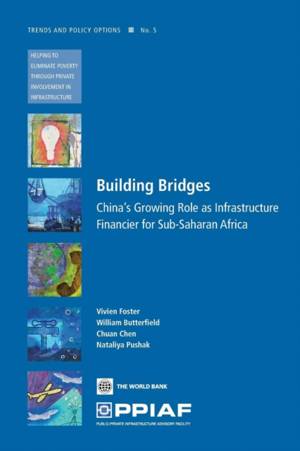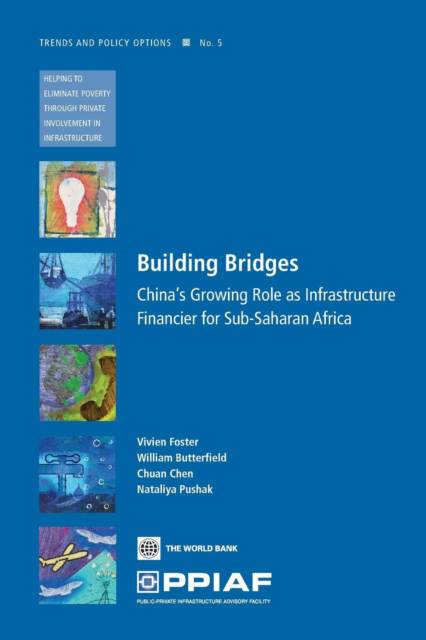
- Afhalen na 1 uur in een winkel met voorraad
- Gratis thuislevering in België vanaf € 30
- Ruim aanbod met 7 miljoen producten
- Afhalen na 1 uur in een winkel met voorraad
- Gratis thuislevering in België vanaf € 30
- Ruim aanbod met 7 miljoen producten
Zoeken
Building Bridges
China's Growing Role as Infrastructure Financier for Sub-Saharan Africa Volume 5
Vivien Foster, William Butterfield, Chuan Chen, Nataliya Pushak
€ 37,45
+ 74 punten
Omschrijving
In recent years, a number of emerging economies has begun to play a growing role in the finance of infrastructure in Sub-Saharan Africa. Their combined resource flows are now comparable in scale to traditional Official Development Assistance from Organisation for Economic Co-operation and Development (OECD) countries or to capital from private investors. These non-OECD financiers include China, India, and the Gulf States, with China the largest player by far. Despite the importance of Chinese infrastructure finance in Africa, relatively little is known about the overall value and destination of financing. The authors of 'Building Bridges' quantify the magnitude of financial flows from China by collating public information from a wide range of Chinese language sources. From these data, they document the geographic distribution of resources, the types of infrastructure involved, the size and financing terms of the projects, and the methods through which finance is being provided. The growth of China and other non-OECD players as important financiers represents an encouraging trend for Africa, given the magnitude of its infrastructure deficit. The investments made by these nations are unprecedented both in scale and in their focus on large-scale infrastructure projects. With new actors and new approaches to financing, there is a learning process ahead for borrowers and financiers, both new and old. 'Building Bridges' summarizes the issues involved in this learning curve, including developing the national capacity to negotiate complex and innovative deals, and to enforce appropriate environmental and social standards for project development.
Specificaties
Betrokkenen
- Auteur(s):
- Uitgeverij:
Inhoud
- Aantal bladzijden:
- 168
- Taal:
- Engels
- Reeks:
- Reeksnummer:
- nr. 5
Eigenschappen
- Productcode (EAN):
- 9780821375549
- Verschijningsdatum:
- 1/09/2008
- Uitvoering:
- Paperback
- Formaat:
- Trade paperback (VS)
- Afmetingen:
- 150 mm x 226 mm
- Gewicht:
- 294 g

Alleen bij Standaard Boekhandel
+ 74 punten op je klantenkaart van Standaard Boekhandel
Beoordelingen
We publiceren alleen reviews die voldoen aan de voorwaarden voor reviews. Bekijk onze voorwaarden voor reviews.








